When you think about looking after your health, the first things that come to mind are most likely nutrition and exercise. And of course, they are two vital components to help keep your body and mind healthy.
What you may not realise, though, is that many factors within your home environment impact your health and wellbeing.
As an Interior Designer, I work with and specify materials, furniture and finishes on a daily basis. What I had never given a huge amount of thought to before, was how various materials impact on indoor air quality and subsequently, human health. Researching for this article was an eye-opener for me.
I got an awful shock to discover that the air in an urban street with average traffic might actually be cleaner than the air inside my living room. (Source: European Environment Agency)
Hold on there, sorry, WHAT? I don’t know about you, but that sounds absolutely mad to me!
The EPA (Environmental Protection Agency) tells us that indoor air is often two to five times more contaminated than typical outdoor air, with certain pollutants up to one-hundred times higher indoors.
That is one scary statistic.
Most homes have more than one source that contributes to indoor air pollution, and there can be a severe risk from the cumulative effects of these sources.
But let’s not freak out.. There is good news a-comin’!
Thankfully, indoor air pollution is one hazard that you can combat by taking some simple steps. There are plenty of ways to reduce pollutants and improve indoor air quality very effectively.
Here are my top tips for enhancing the air quality in your home, and in turn, improving your health!
Plants… Loads and Loads of Plants!
Plants are natural air purifiers. You can never have too many, in my opinion!
My obsession with indoor plants has grown wildly (pun intended 😀 ) over the last couple of years. They look beautiful, they connect you with nature, and they help to clean the air in your home or work environment.
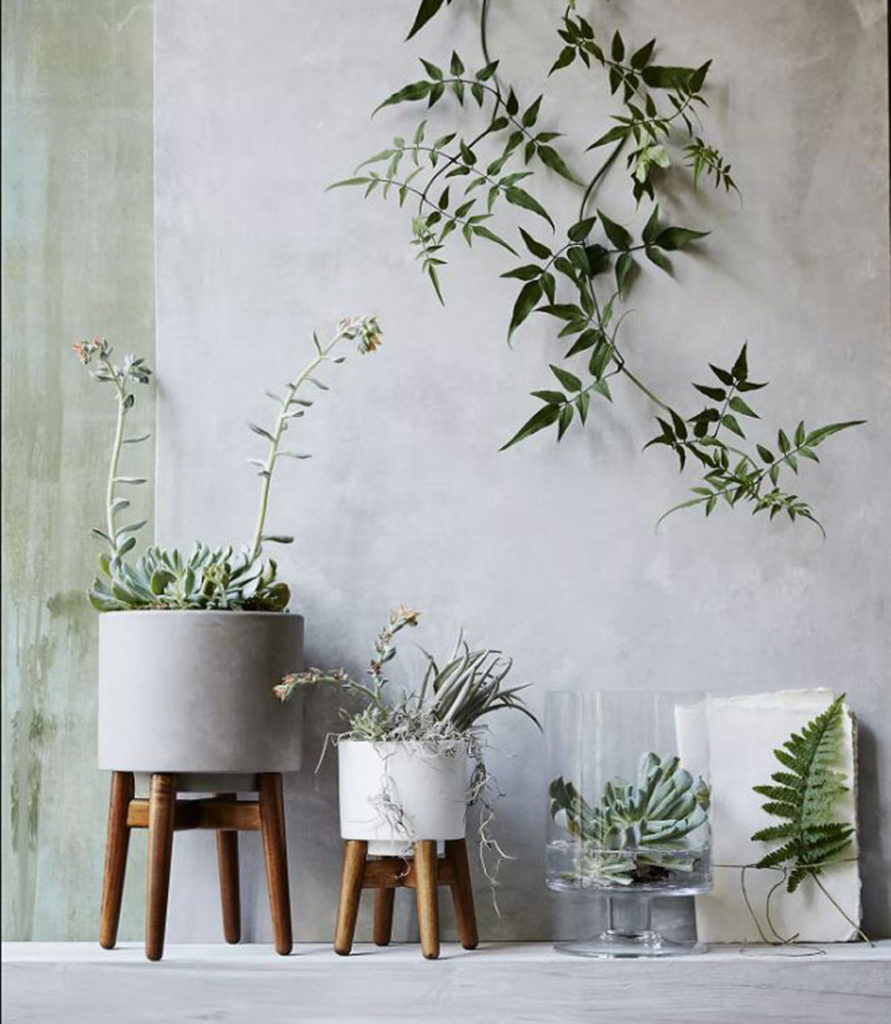
There is a myriad of ways to incorporate plants into your home: Trailing plants sitting on open wall shelves, potted plants on side tables, or a herb garden in your kitchen window. You can even find feature light fittings with integrated planters like these delightful ones from Lights.ie!

A NASA study found that living plants improve indoor air quality by removing pollutants such as formaldehyde from the surrounding air.
Unfortunately, I haven’t fully mastered the art of keeping them in their best luscious, green state, but I am starting to figure it out. There have been times of under-watering, over-watering, too much sun, not enough sun, and an occasional smidgen of neglect – It can be hard to get right! My houseplants now get a weekly shower (in the actual shower!), and that seems to work wonders!
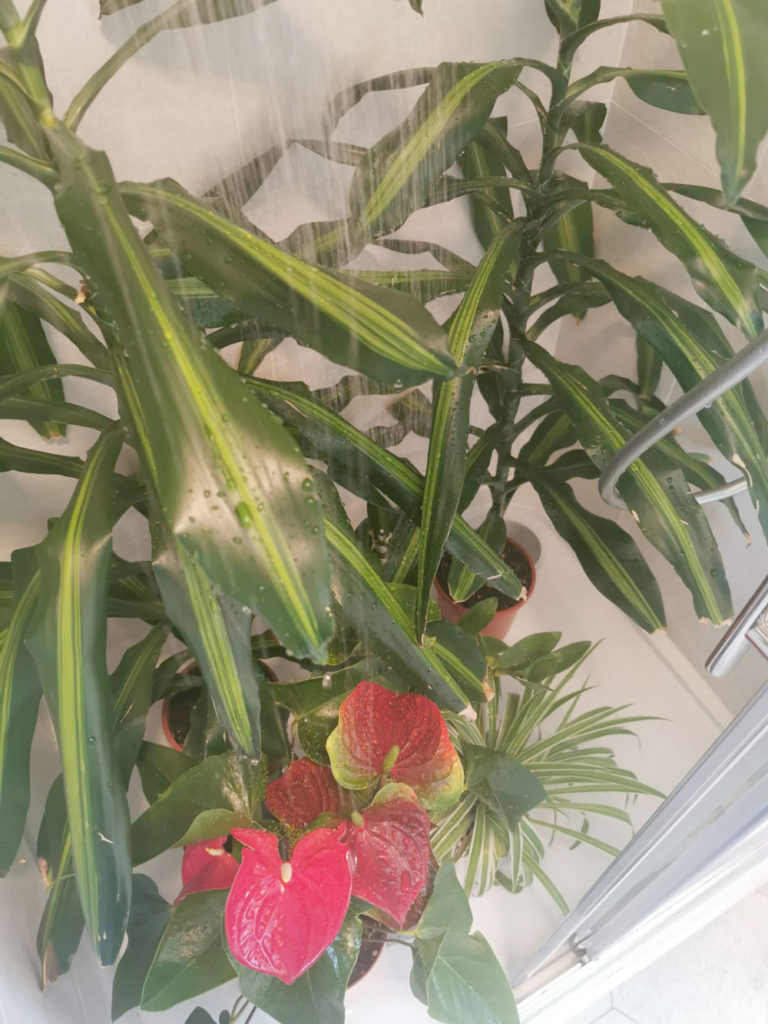
Shower Time for my Plant Babies!
Choose Natural Wood for Cabinetry, Furniture and Flooring
For both health and environmental reasons, natural wood is generally my preference for interiors.
Although admittedly, I am guilty of using synthetic wood products in numerous instances over the years… including the kitchen cabinets in my own apartment. The doors look like painted solid wood shaker doors with a textured grain, but they are actually MDF wrapped in PVC (plastic). And full disclosure: The floating ‘oak’ shelves are too. Unfortunately, at the time of the refurbishment works a few years ago, I was not as well informed on the air quality (or environmental) implications of some of these choices.
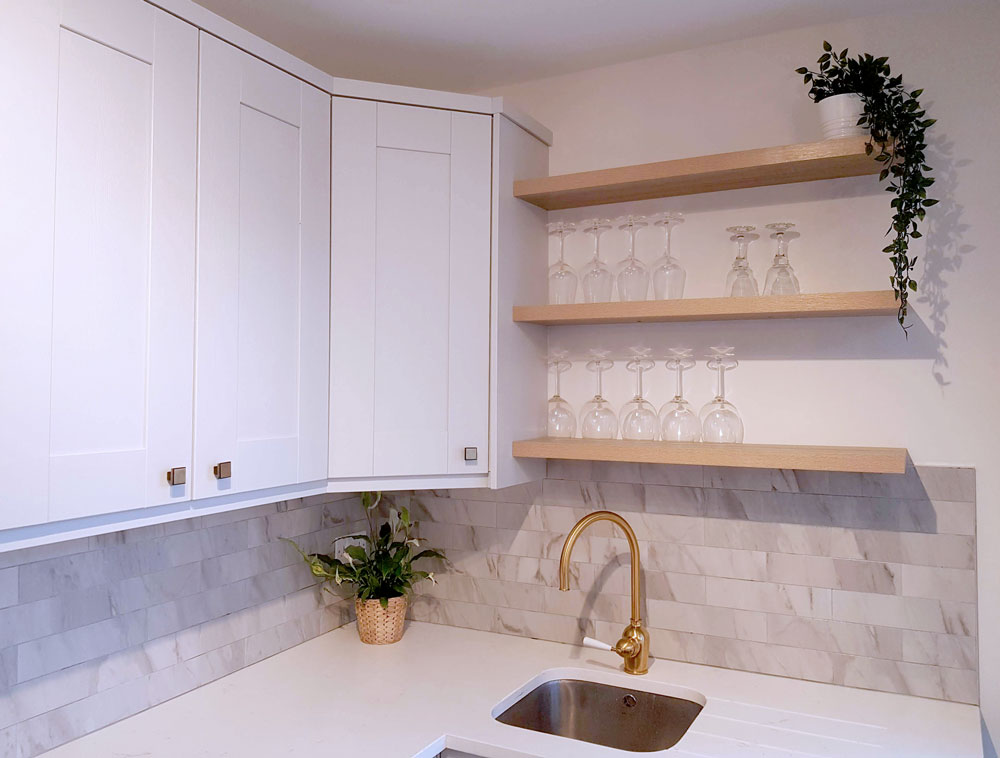
These synthetic products are appealing for their affordability and durability, but unfortunately are not great for your health or the planet.
Wood products such as pressed wood sheets (MDF or chipboard) are made from wood particles or sawdust bonded together, often with glue containing formaldehyde (a known carcinogen that ‘off-gasses’ into the air we breathe).
MDF is used extensively to make kitchen cabinetry, kitchen worktops, shelves, tables, storage units, flooring, doors. They are often finished with a decorative layer such as veneer (a thin layer of real wood) or plastic laminate, or simply painted (lacquered) in a matte or gloss finish. The production of decorative finishes (veneers and plastic laminates) has become so good that it is sometimes a little challenging to tell if products are solid wood or simply wood composites that have been ‘wrapped’. So when speaking with your kitchen or furniture supplier, be sure to be clear on your wishes for genuine hardwood.
External grade pressed-wood panels are a better choice than the indoor versions as they generally use non-urea-formaldehyde binders for increased moisture resistance.
Or better again – Ask your carpenter to use ‘Eco Boards’.
Eco-Boards are made from agricultural waste such as straw, reeds, wheat, rice, corn, cotton stalks, soybean, flax, fruit tree twigs, branches and trimmings. They are an ecological alternative to chipboard, MDF, OSB, and Plywood with the benefit of a negative carbon footprint. Eco-boards are versatile and can be used for the wide range of interior applications as their non-eco counterparts.

Although it can be slightly more costly, natural hardwood for cabinetry, furniture and flooring is generally best wherever you can! Don’t forget to look for the FSC logo to be sure it comes from responsibly sourced forests.
Tom Dixon – Sculptural ‘Fan’ Table in Solid Oak with matching family of chairs and stools.
Choose Natural Materials for Soft Elements
When selecting soft furnishings for your home such as cushions, throws and curtains – Select natural and preferably organic materials as much as possible for a healthier choice. This will help you to avoid harsh chemicals in many common synthetic textiles.
Look for cotton (organic ideally to avoid exposure to pesticides), linen, wool or textiles made from bamboo fibres.
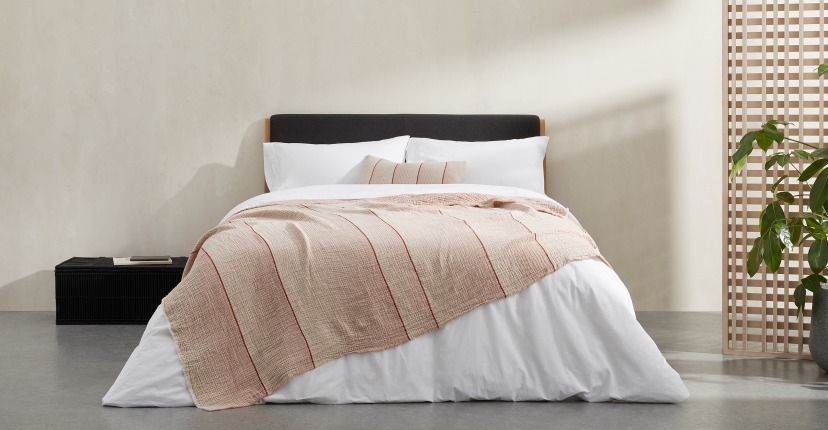
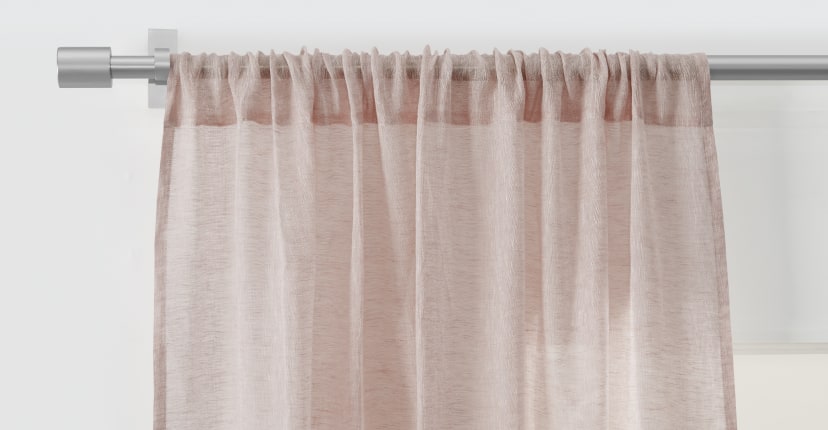
For rugs and carpets, stay away from synthetic fibres and opt for natural wool (for softness) or jute, sisal or seagrass (extremely hard-wearing but with a more textural finish). Ask your supplier to ensure that the backing is also 100% natural.


Be mindful when choosing sofas or other upholstered furniture. Go for natural fabrics if possible. Keep in mind that certain selling points like ‘stain resistant’ or ‘flame retardant’ means high amounts of potent chemicals were used in the production. Ask your supplier to confirm that any foam is formaldehyde free.
And don’t forget other soft household elements like towels, bath-mats and bedclothes!
Some of my favourites for bedding and bathroom essentials:
Panda – Premium quality products made from FSC certified bamboo fabric. The fact that the packaging is plastic-free is a bonus!
Scooms – Natural materials (goose down, cotton, alpaca and merino wool) and also plastic-free packaging!
Use Non-Toxic Paints
Most conventional paints and varnishes are derived from refined oil – materials such as acrylic or latex. They contain VOCs (Volatile Organic Compounds) that seep out and are harmful to both human health and the environment. My advice is to look for green, non-toxic (Zero VOC), natural paint options like Auro, Lakeland Paints, Pure & Original, Biofa or Earthborn.

Natural paints are more expensive than standard ranges, though not horrendously so. Seeing as walls account for the largest surface area in your home, they can be the biggest culprit for emitting harmful chemicals if non-natural paints are used.
Paint noticeably ‘off-gasses’ chemicals during application. You know that freshly painted smell. Although ‘fresh’ probably isn’t the best word here. Those fumes are toxic. Conventional paint continues to off-gas for years, although thankfully less-so as time goes by.
Painting over old paint with a new layer of natural paint helps to seal in the harmful chemicals. This ‘sealing’ will be more effective where the previous coating is older, as the amount of off-gassing is likely to be lower.
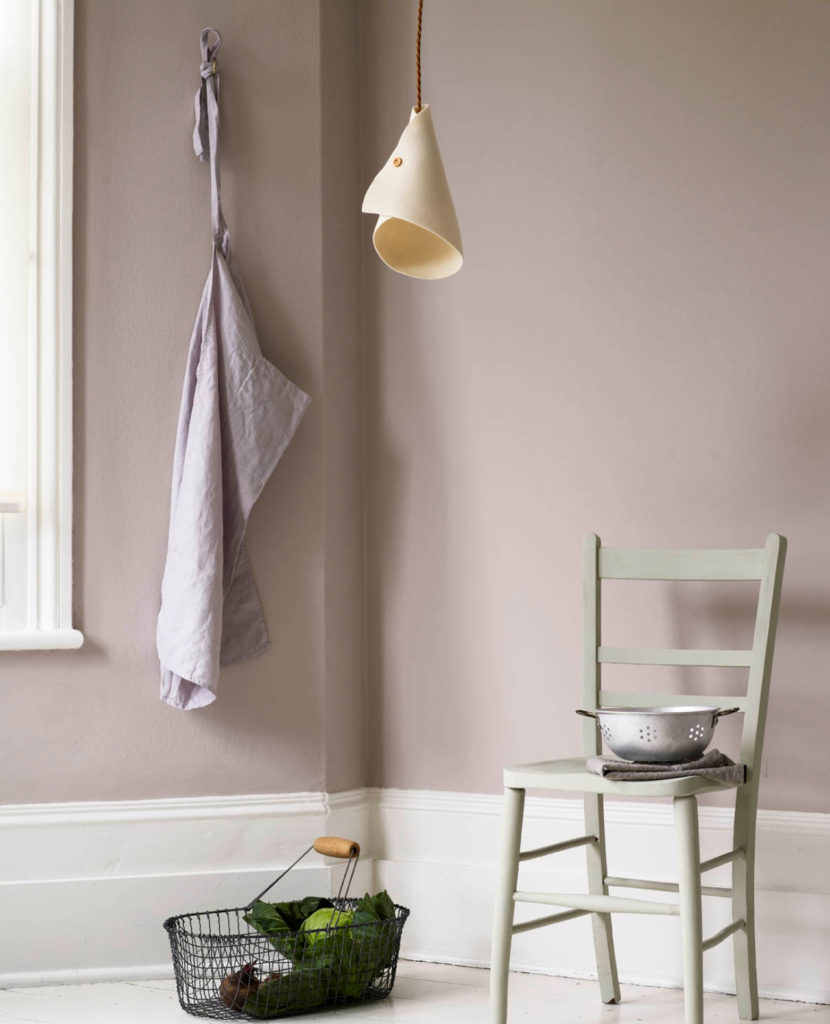
Made from renewable materials, natural paints require much less energy-intensive production processes. Natural paints are non-toxic, environmentally friendly, and they are micro-porous meaning they allow walls and surfaces to breathe.
Use Natural Cleaning Products
There are plenty of earth and health-friendly cleaning products available these days. Big Green Smile and Evolution Organics have some fantastic options. Or you can make your own! ‘Vinegar works on almost everything’ is my mantra, but maybe check out this article from Friends of the Earth for more comprehensive advice!
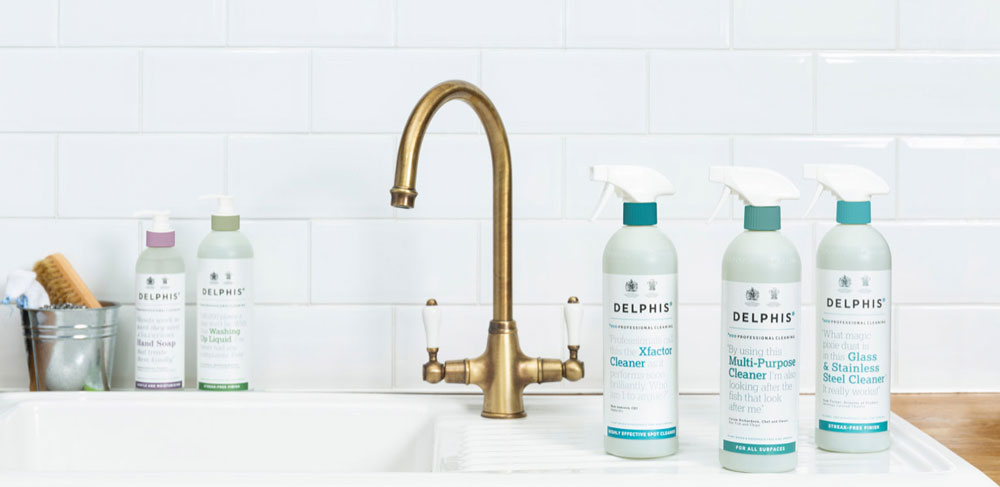
I switched to natural cleaners myself a couple of years ago, Now, if I ever use the standard chemical-based cleaners, I get a banging headache.
In these worrying times of a global pandemic, I understand that many of you might want a deeper clean than vinegar and lemon juice!
Are natural cleaners sufficient against Covid-19?
In short, no. Lemon juice and vinegar are outstanding for general cleaning, dishwashing, cutting through grease and shining up glass surfaces. They contain natural anti-bacterial properties, and so they are incredibly effective in killing countless household germs. But there does not currently seem to be scientific evidence that they kill the COVID-19 virus. However, there are better solutions available than dousing everything in noxious bleach.
Bleach is breathtaking… and not in a good way.
The EPA’s list of cleaning products that work against COVID-19 includes Hydrogen Peroxide and The World Health Organisation (WHO) advises an alcohol/ethanol solution (70%) for disinfecting surfaces. Both hydrogen peroxide and alcohol are far less concerning to human health than the likes of bleach.
My genius Scientist brother – he goes by ‘Dr. Johnny’ – has also approved these two solutions, in case the EPA or the WHO weren’t enough for you 😉
The WHO states that it is critical that surfaces are cleaned (try natural soap and water!) prior to disinfection. Disinfectants are not substitutes for cleaning.
I would suggest trying to minimise use of powerful solutions such as hydrogen peroxide or alcohol. Use them for frequent touch points such as door handles. And go natural where you can.
Ensure Adequate Ventilation of Stoves and Open Fireplaces – or Switch to Cleaner Fuel Types.
I imagine I may not to be popular for sharing this opinion!
In a culture where we (and I include myself in that) think ‘Oh there is nothing like an open fire’ – It makes it a little more difficult to consider switching to cleaner and greener heating sources for our homes.
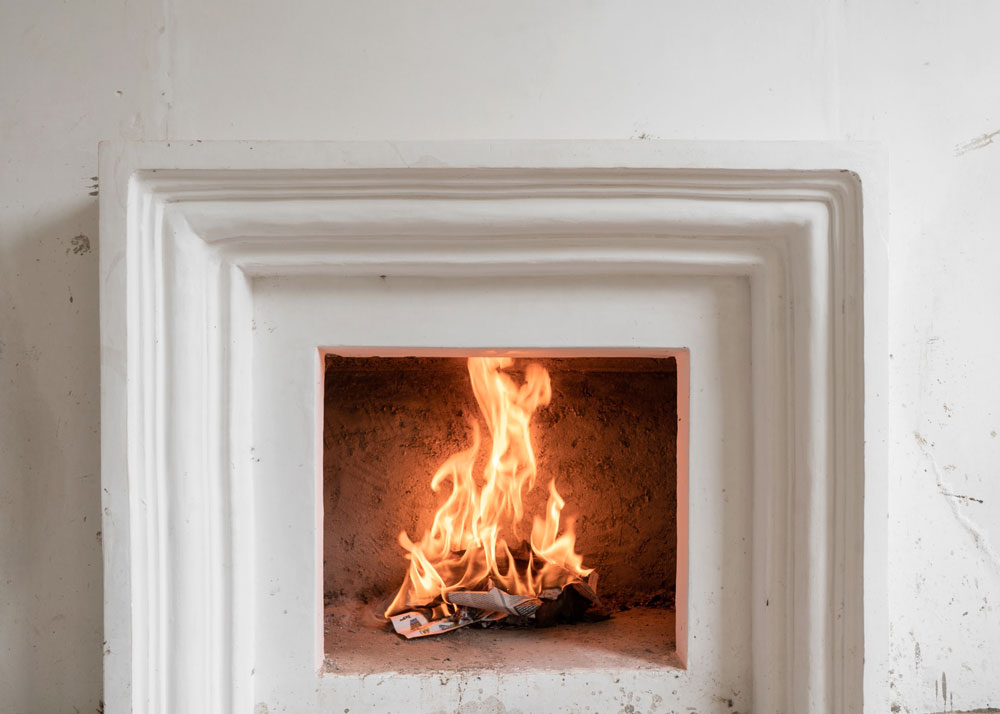
But the facts are clear: Particulate matter, as well as carbon monoxide, are emitted in the combustion of solid fuels such as wood and coal. They have negative impacts – both immediate and long term – on your eyes and respiratory system. (Source: EPA)
If you do have a stove in your home, ensure it is properly fitted and adequately vented with an appropriate flue. Modern wood-burning appliances are much less of a concern than older models, as they burn cleaner and produce less smoke inside and outside your home.
If you have an open fireplace, have your chimney cleaned regularly. Install a carbon monoxide detector which sounds an alarm when carbon monoxide levels increase beyond safe levels.

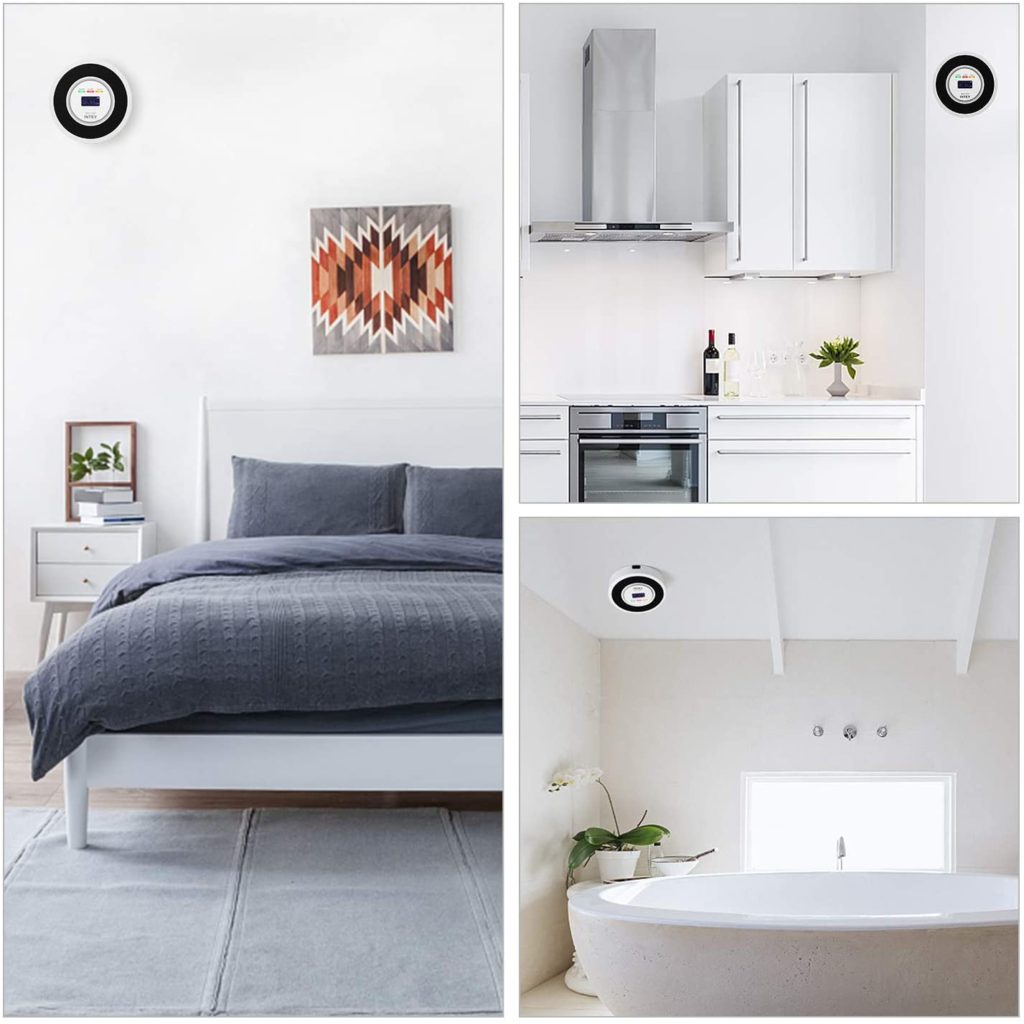
Household ventilation – either natural (opening windows) or a mechanical system – will significantly help to clear the air of these harmful substances.
The healthiest option is to explore cleaner heat sources like solar power, geothermal or air-to-water heat pumps. They do involve more of an initial investment than traditional non-renewable heat sources, but they are healthier, eco-friendly and will significantly reduce your heating bills.
Switch to 100% Natural Candles
Most standard candles are made from paraffin wax which is petroleum based and created using crude oil (also known as fossil fuel). This means they are highly detrimental to your health and to the earth.
As somewhat of a candle-aholic, I was devastated to discover in recent years that candles can be toxic. I used to light candles every evening (and still do) as I find the gentle flickering flames help me to unwind. I am very aware that sounds completely cheesy, but it is so true. The higher the stress level, the more candles lit! Now is probably a good time to apologise to my old housemates as I was unknowingly poisoning us all every evening for years!!
Happily, I have since found that natural alternatives are abundant. I recommend replacing paraffin-wax candles with 100% natural candles. High-quality soy wax or beeswax candles scented with pure essential oils are much safer alternatives. Do make sure to keep your room ventilated when you have candles lighting.
Big Green Smile have collection of ‘We Love the Planet’ soy wax Coconut Candles. The natural coconut shells can be used as little bowls once the candles are used up, giving them that extra sustainable edge. They come with matching stands to sit them on, or they can float in water. How CUTE are they?!
Use Essential Oil Diffusers instead of Artificial Fragrances
Essential oil diffusers are my new favourite thing!
I feel like I’m in a Spa here during the day, diffusing my favourite fresh mix of eucalyptus and mint. At night, I go for lavender, and I find it seriously soothing.
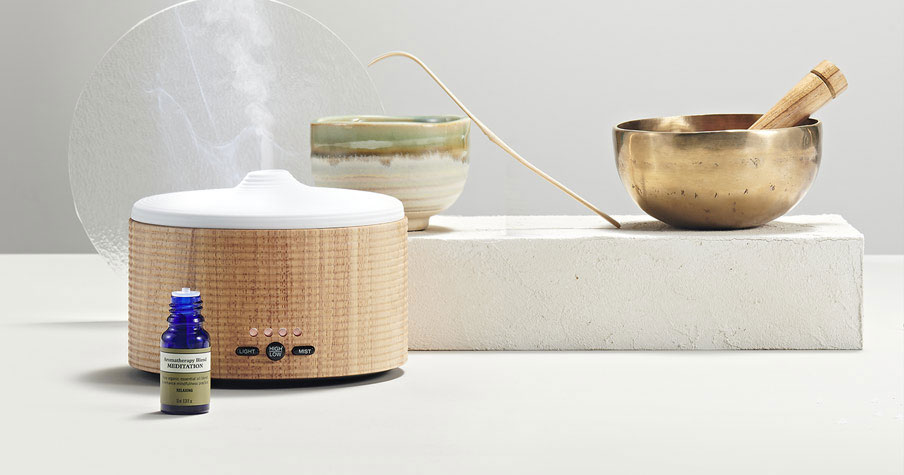
Artificially-fragranced reed diffusers and plug-in air-freshening devices are all serious offenders to air quality. Stay away from them at all costs.
Essential Oil diffusers or natural reed diffusers are a wonderful way to fragrance your home without the use of harmful chemicals. Be sure to use high quality, completely pure and organic essential oils.
Auli reed diffusers are formulated using sustainably sourced, natural ingredients. Their products are completely free from paraffin, phthalates, parabens and synthetic colour.
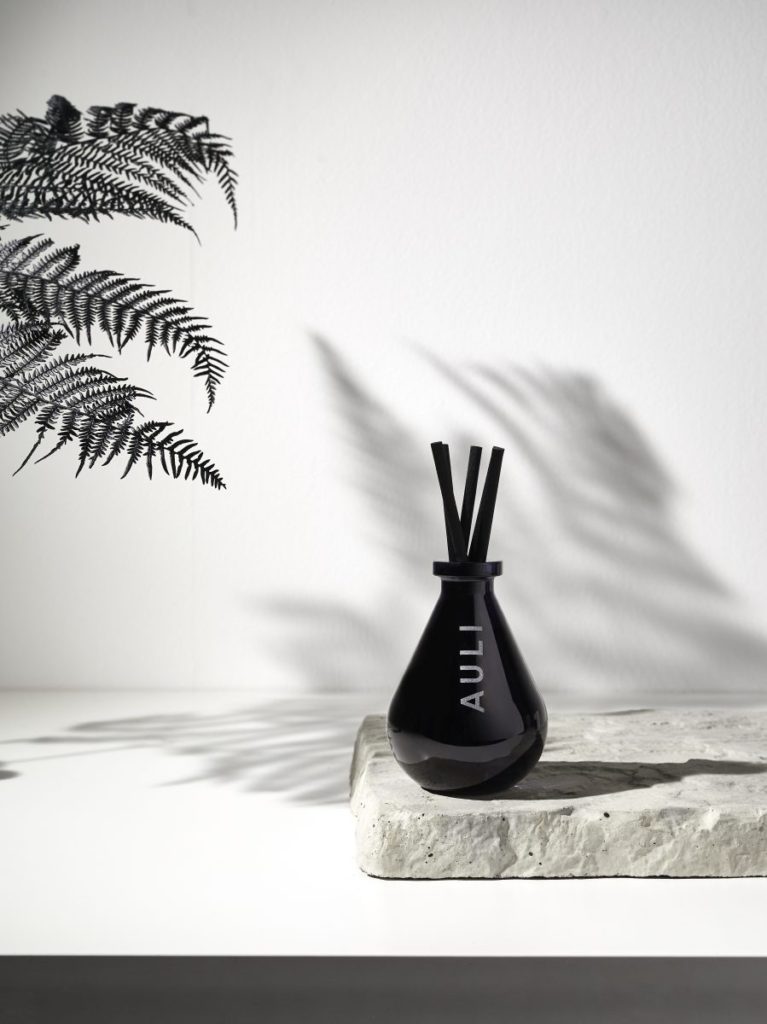
Invest in an Air Purifier.
Air purifiers clean the air can prove particularly helpful during hay fever season by removing allergens.
They can trap a range of tiny particle matter from the air:
- Dust
- Pet hair
- Pollutants
- Bacteria
- Odours
- Harmful gases (VOCs)
Leitz TruSens is a great example of a lab-tested and reliable Air Purifier. It is proven to remove pollutants, destroy germs via UV light sterilisation, and then distribute purified air back into your space.
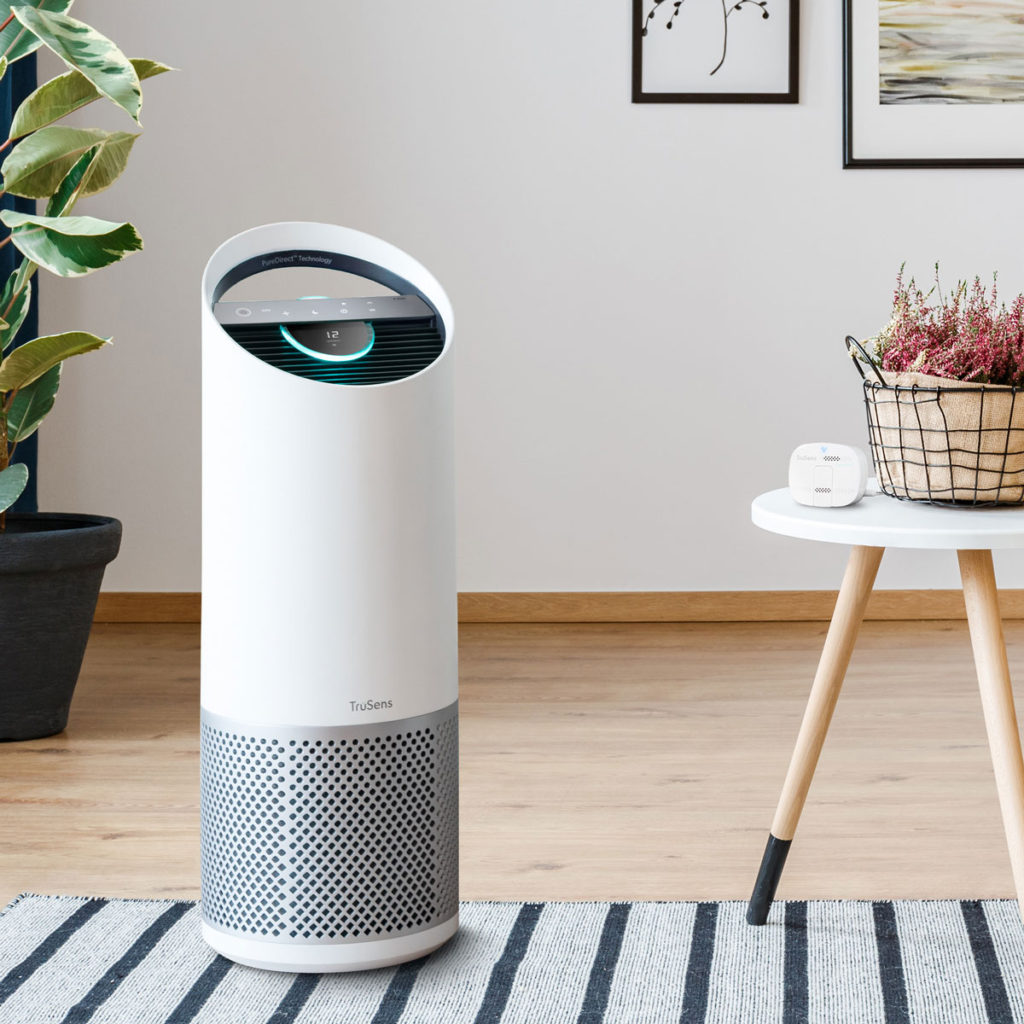
Deal with Dampness and Mould
Mould growth is due to dampness and inadequate ventilation. If you notice mould anywhere in your home, clean it away immediately. Then deal with the source of the problem so that it does not reoccur.
- Check that your ventilation (airflow through a building) is adequate.
- Fix any leaks
- Always use an extractor hood and/or open the kitchen window when cooking.
- Always use an extractor fan and/or open the bathroom window when showering.
- Use dehumidifiers in known damp zones such as basements.
More information on indoor air quality / dampness and mould can be found in this WHO guidance document
Mould spores become airborne and are immensely harmful to human health. Ventilation is critical to avoid excess humidity and condensation on surfaces. Which leads me on to my final point…
Let the Fresh Air in (and the Stale Air Out!)
Open those windows and allow your house to ventilate. This is the cheapest and easiest way to improve the air quality of your home.
As the coldest person on the planet, I often find it hard to take my own advice on this, especially during our painfully long winters. I like the house to be kept nice ‘n’ toasty, and the thought of opening the windows sometimes kills me! The more I understand the importance of indoor air quality, the better I am becoming at sucking it up and airing the house.

Opening your windows just a couple of times a day for a few minutes will truly clear out and refresh the indoor air. This will remove a vast amount of pollutants that may have built up inside your home.
“Sufficient mechanical or natural ventilation is a key element in removing humidity, carbon dioxide, bioeffluents and other pollutants from indoor air.”
world health organisation – guidelines for indoor air quality
I am stating the obvious here, but when you ventilate your home, you want the airflow coming through to be fresher, not dirtier! So if you live somewhere that every chimney in the town is going ninety every evening, I would advise airing the house during the day time.
Older homes do have a level of natural infiltration of air through ‘hole in the wall’ air vents, gaps around windows and doors as well as other cracks and crevices. While this does help to ventilate a house, it is unfortunately extremely energy-inefficient as the heat escapes along with the stale air.
Newer homes are becoming increasingly air-tight meaning mechanical ventilation is a must. If you are fortunate enough to be at the stage of building or refurbishing, I would highly recommend investing in a mechanical ventilation system. It will remove stale air and pump fresh air throughout your house without the need for opening your windows on a cold day. Systems such as Heat Recovery Ventilation have the added bonus of reducing your energy bills.
Start with Small Steps to Create Healthier Air in your Home
Please don’t panic if you are sitting in a house full of MDF cabinetry, open fireplaces and non-natural paint! I am sitting in one of those houses myself right this minute!
Now that you are armed with all of the simple steps above, you can make more mindful and healthy choices in future.
In the meantime, simply invest in some more house plants and open up those windows – That’ll do the job nicely! 😊
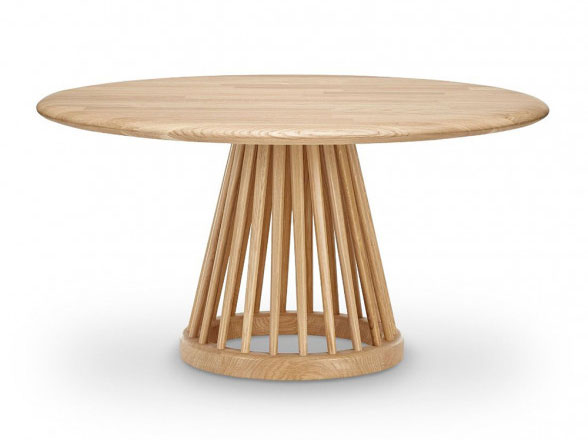


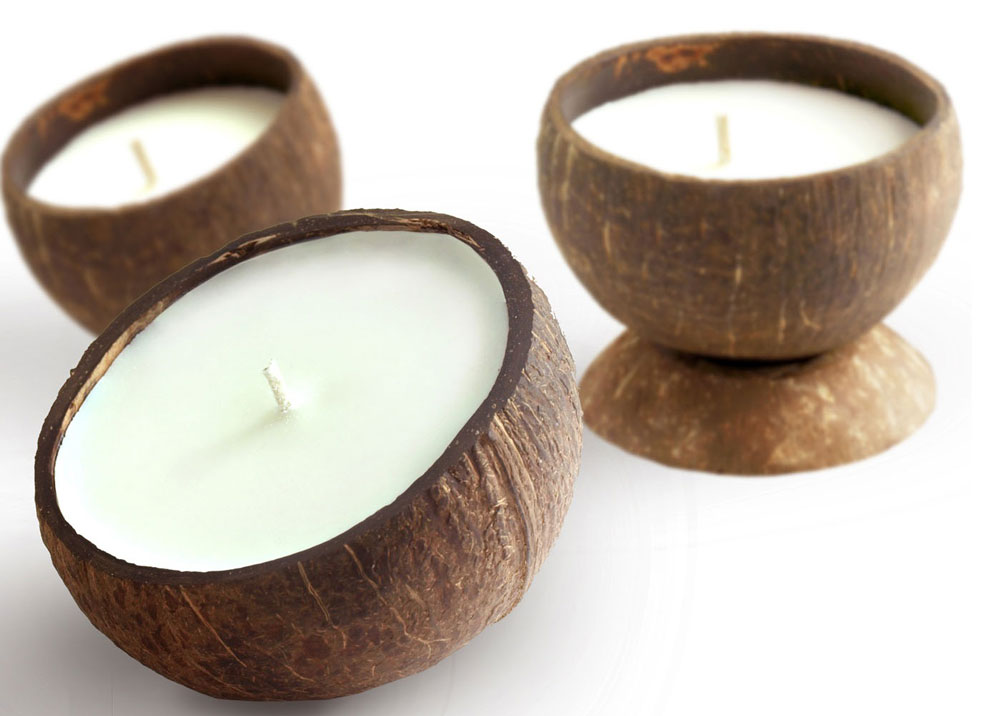
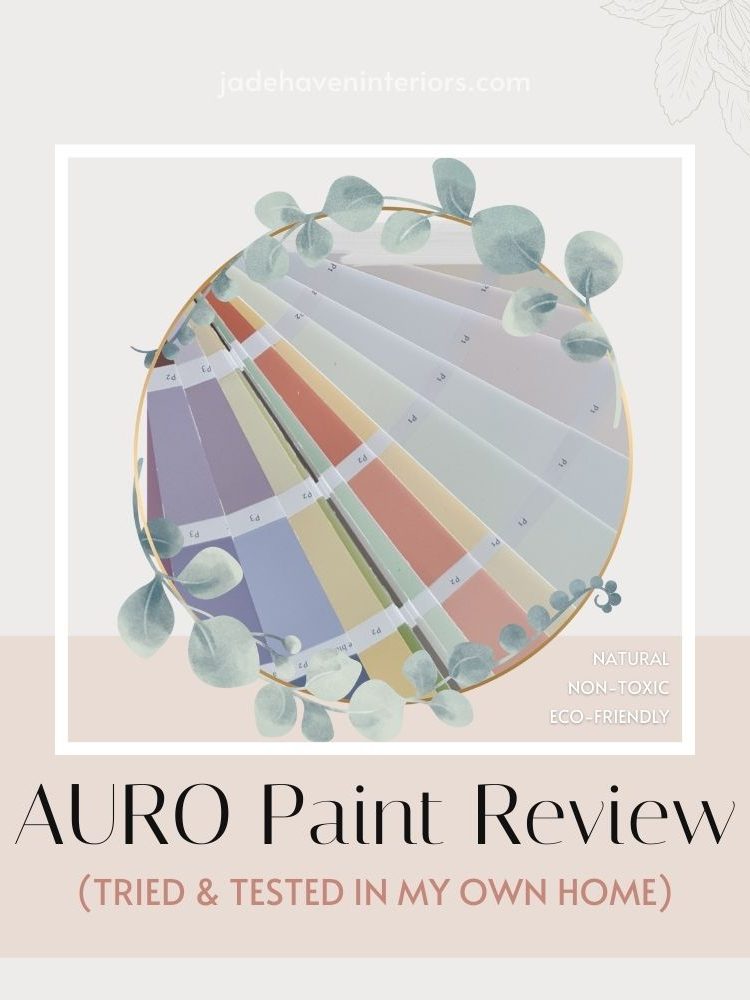
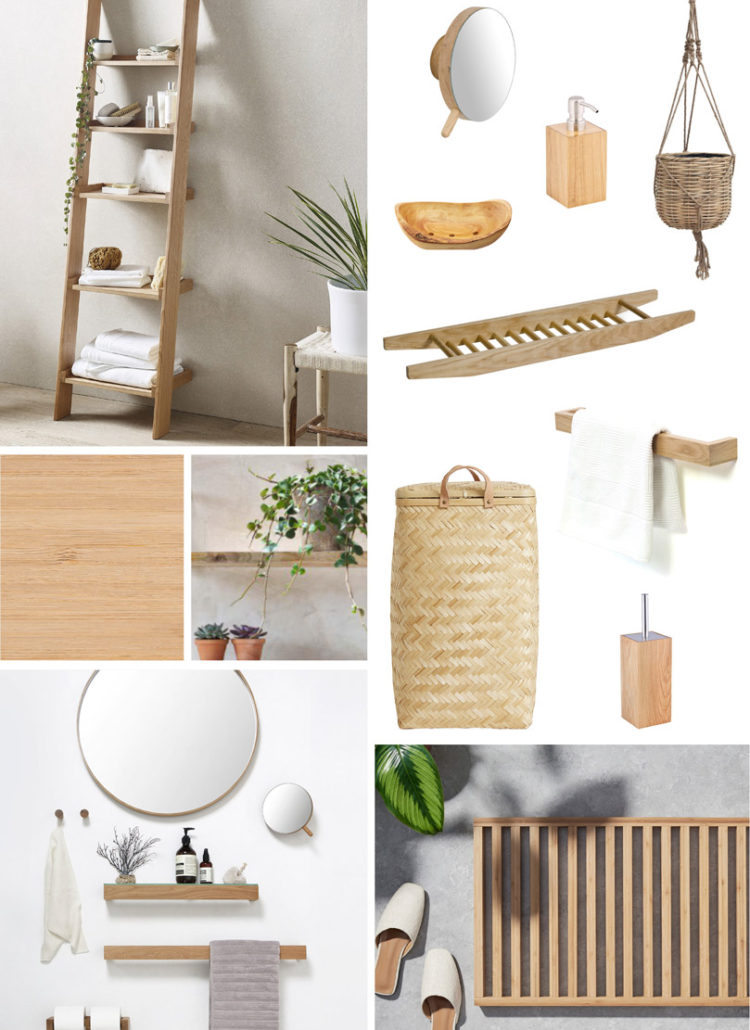



[…] And of course.. lots and lots of potted plants. Not only do indoor plants physically connect you with nature, but they also aid in detoxing the air in your home! For more tips on this, read this blog post: Simple Steps to Detoxify the Air in Your Home for Better Health […]